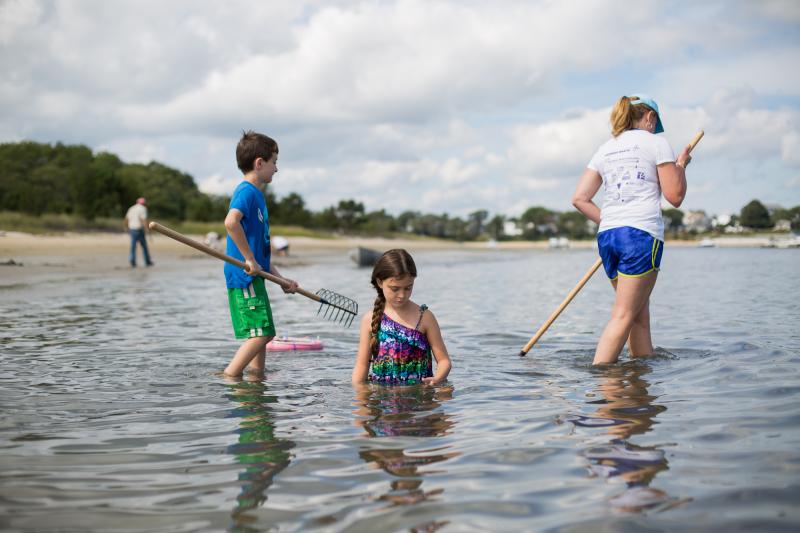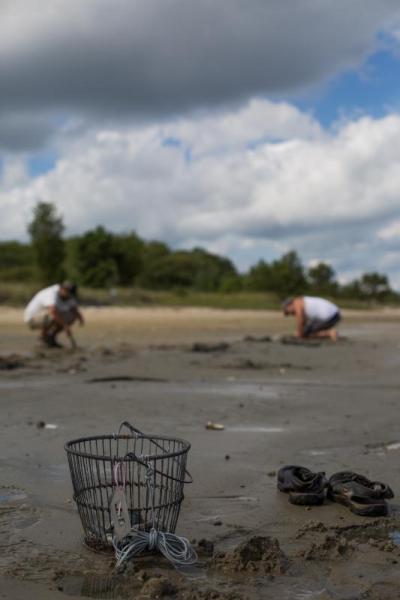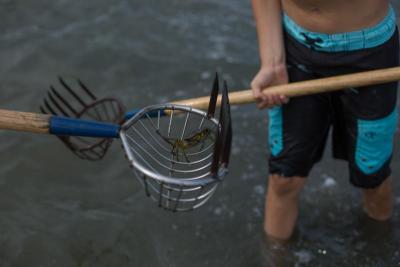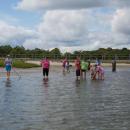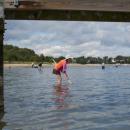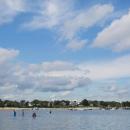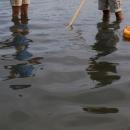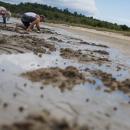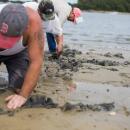Catching quahogs with the Coalition
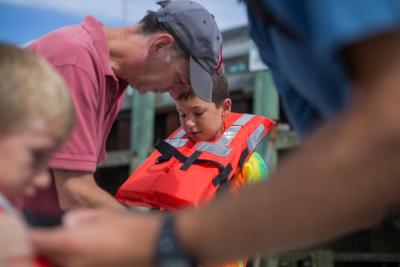
Though they weren’t able to keep them for dinner, a group of about 30 people trooped out to Burgess Point Saturday afternoon to learn how to quahog with the Buzzards Bay Coalition.
The coalition led the outing as a part of its Bay Adventures program for the month of September. Before the group got digging, coalition Outdoor Educator Cassie Lawson explained how and where to find quahogs.
“Quahogs live a few inches under the surface in the intertidal and subtidal zones [of the ocean],” Lawson explained. “Quahogs are filter feeders, which means that they send this little siphon up through the mud, and they filter in water over one siphon, and then it filters inside their gills, which are inside their body, and [they] eat plankton … and then they expel the water through a different siphon.”
Lawson said the group would not be able to keep the quahogs they caught unless they had shellfishing permits on them. One woman, Lisa DeGrazia, did have a permit and managed to rake in quite a few quahogs.
“Someone also gave me theirs, so I scored!” DeGrazia said. “He gave me eleven quahogs.”
DeGrazia left the point with around 30 quahogs in her basket.
Vice President of Community Engagement Rob Hancock later said he thought the experience was invaluable for those who chose to attend because it presented them with a concrete reason to care about the health of the area.
“One of the key things is that shellfish, in particular, really depend on clean water,” Hancock said. “So for folks here to really enjoy going shellfishing, they are going to want to be committed to protecting the health of their estuaries around here.”
Fortunately, it seems the overall health of the water is improving, Hancock said, as a result of keeping the waters cleaner than they were 20 or 30 years ago.
“It’s a success story,” Hancock said. “Communities like Wareham focused on addressing the wastewater issue through wastewater upgrades and addressing stormwater runoff. The quahogs were there, but you just couldn’t eat them because they had bacteria that could be dangerous to humans.”
But the health of the bay isn’t above water yet. Hancock said the “biggest challenge” the bay currently faces is nitrogen pollution that comes from sources such as septic tanks and crop fertilizer runoff. Because nitrogen acts like a fertilizer, Hancock said, it causes algal blooms that suck all the oxygen out of the water, when they die.
“Quahogs … need oxygen to survive,” Hancock said. “They can’t really easily move if the water in their little section of the harbor... starts disappearing. They can’t just sort of easily up and swim away.”



